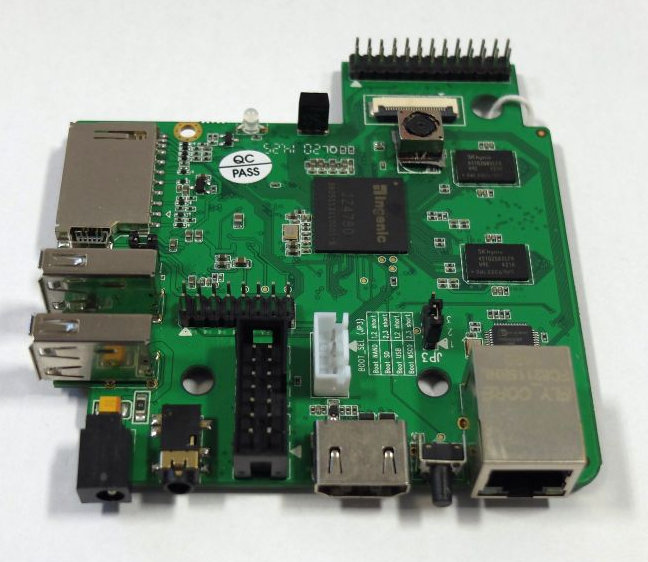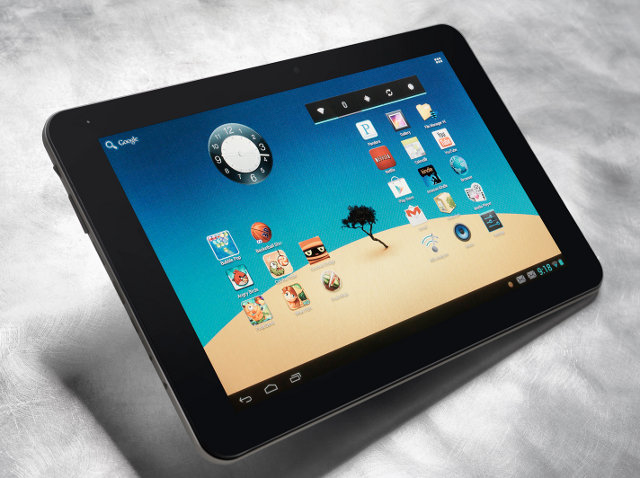There are plenty of ARM based development boards running Linux and Android, but with MIPS it’s a different story. Microchip does have some affordable development board powered by their MIPS MCUs, but these don’t have the hardware specs to run Linux based operating systems, and Ingenic Newton Platform for wearables can run Android and Linux, but it appears to be reversed to companies with virtual no documentation. There are some MIPS platform running OpenWRT on hardware such as routers or Wi-Fi boards, but these can’t be considered fully supported development boards. But Imagination Technologies is trying to make MIPS more relevant, first by launching Prpl developers’ community, and MIPS Creator CI20 development board powered by Ingenic JZ4780 dual core MIPS32 (Xburst) core processor with PowerVR SGX540 GPU should soon be available with complete documentation and source code. Let’s go through the hardware specifications first: SoC – Ingenic JZ4780 dual core […]
Prpl Non-Profit Organization to Work on Linux, Android, and OpenWRT for MIPS based Processors
In what looks like an answer, albeit fairly late, to Linaro, the non-profit organization working on open source software for ARM based SoCs, a consortium of companies composed of Imagination Technologies, Broadcom, Cavium, Lantiq, Qualcomm, Ingenic, and a few others, has funded Prpl (pronounced Purple), “an open-source, community-driven, collaborative, non-profit foundation targeting and supporting the MIPS architecture—and open to others—with a focus on enabling next-generation datacenter-to-device portable software and virtualized architectures”. The Prpl foundation will focus on three key objectives: Portability – To create ISA agnostic software for rapid deployment across multiple architecture Virtualization & security – To enable multi-tenant, secure, software, environments in datacenter, networking & storage, home, mobile and embedded Heterogeneous Computing – To leverage compute resources enabling next generation big data analytics and mining Initially there will PEG (Prpl Engineering Group) to take of the following projects for 4 market segments (datacenter, network & storage, connected consumers, […]
GCW Zero Handheld Console Runs 3D Games via Open Source Vivante GPU Drivers (Etnaviv)
GCW Zero is an open source handheld gaming console featuring Ingenic JZ4770 MIPS processor with Vivante GC860 GPU, 512MB RAM, 16GB internal storage, and a 3.5″ LCD with 320×240 pixels. The device runs Linux (OpenDingux) , and retro games and emulators. GCW Zero had a successful kickstarter campaign, and is now available in a few shops such as ThinkGeek (US), DragonBox (EU) for $150 / 125 Euros. Today, I’m writing about this console, not because of amazing specs, nor price, but because it could be the first device with an embedded SoC that retails with an open source GPU driver. In September of this year, GCW Zero received a firmware update with Etnaviv GPU driver for Vivante GC860 adding support for 3D games via OpenGL ES support. The video below shows Quake 3 Arena running on the game console with the Etnaviv drivers. Lots of OpenGL ES1 and 2 features […]
GEAK Watch is an Android 4.1 Smartwatch Packed with Features
Smartwatches have been available since 2011, in different formats, most of the time as a smartphone companion such as Pebble, or sometimes with slightly more powerful hardware running Android 2.3. one example being the I’m Watch. The GEAK Watch goes a step further for a relatively powerful Ingenic JZ4774 MIPS processor clocked at 1 GHz, Android Jelly Bean, WiFi 802.11b/g/n, Bluetooth 4.0, NFC…, and the ability to install apps directly from an app store. GEAK Watch hardware specifications: SoC- Ingenic JZ4774 processor @ 1GHz System Memory – 512MB RAM Storage – 4GB NAND Flash Display – 1.55″ LED capacitive touch screen (OGS) with 240 × 240 resolution Connectivity: WiFi 802.11 b/g/ n Bluetooth 4.0 NFC/GPS/FM Sensors – G-Sensor, Gyroscope, and Geomagnetic sensors Battery – 330mAh lithium polymer battery The watch is water-resistant (IP3X), enables heartbeat and blood pressure monitoring (maybe with external Bluetooth hardware), can be used as a pedometer, and […]
Open ARM GPU Drivers FOSDEM 2013 Video and Call to ARM Management
As I previously wrote, FOSDEM organizers are slowly uploading FOSDEM 2013 videos. One of the most interesting talk “Open ARM GPU Drivers” is now available. I’ve also uploaded it to YouTube (embedded below) to give it more exposure. Luc Verhaegen has also written a recent blog post entitled “Hey ARM!” where he announces the release of the modified source for Quake 3 Arena demo, and asks ARM to join them in making an open source driver. Open ARM GPU Drivers @ FOSDEM2013 This session covers the following key points: Problem – Binary drivers are mainly designed to run in Android, and it’s very difficult to have proper GPU drivers for Linux, and companies are not interested to release open source drivers or even just documentation, as they are not convinced it will benefit them in any way. Legal – This is actually the main issue, as open sourcing existing driver […]
Ingenic JZ4780 SoC Features a Dual Core MIPS CPU and PowerVR SGX540 GPU
MIPS and Ingenic Semiconductor have just introduced the JZ4780, a low cost dual core MIPS XBurst processor with a PowerVR SGX540 GPU. The companies will demonstrate their solution in a 10″ Android 4.1 Jelly Bean reference tablet during CES 2013, on January 8 – 12, 2013. JZ4780 SoC Highlights: SoC – Dual XBurst core up to 1.5GHz CPU + PowerVR SGX540 GPU supporting 2D Graphics, 3D Graphic, OpenGL ES2.0 and ES1.0, OpenVG1.1 VPU – 1080P Decoder,1080p encoder Memory Interfaces – 8-bit SLC/MLC/TLC NAND Flash, 64 bit ECC |16/32-bit DDR3/DDR2/DDR/Mobile DDR SDRAM Peripherals – AC97/I2S/SPDIF, Audio Codec, LCD-IF, LVDS, HDMI, Camera-IF, Touch ADC,PCM, I2C, SPI,UART, SD/MMC/SDIO, USB Host, USB OTG 2.0, TS-IF, GPIO, OTP Power Consumption – Ingenic’s MIPS-Based XBurst processor is said to consumes approximately 140mW per GHz under full load. Package – BGA390 17 x 17 x 1.1 mm, 0.8mm pitch Process – 40nm CMOS Ingenic will also demonstrate […]







